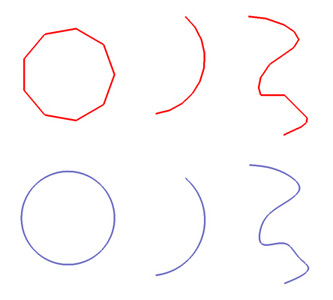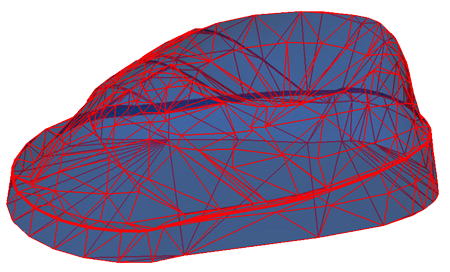What you Need to Know about Adobe’s PDF for 3D Modeling
Ashlar-Vellum’s technical department is often asked, “How do I import and edit a PDF into Cobalt™ (or Xenon™ or Argon™)?” It’s a good question with a very complex answer.
First, be aware that files captured to Adobe’s Portable Data Format (PDF) are usually not intended to be manipulated later in different CAD systems. The reason for using a PDF is to preserve the visual integrity of the document while providing access for easy review and markup, and at the same time preventing unauthorized changes to the data.
In certain cases, however, it is possible that the creator of the PDF file intended that the data be available for editing. In this case they must take specific steps to ensure that the appropriate type of PDF is generated, or that a specific attachment is inserted into the PDF.
The Eight Types of Data for Adobe PDF version 8
As we consider this issue, let’s look at the background of PDF. PDF is essentially a “data carrier” that accepts many types of data. The PDF display software then interprets and displays this data exactly as it was accepted, regardless of operating system, system preferences, installed fonts or the program used to create the document.
There are eight types of data that can be captured and displayed in a PDF file. There are five types of basic data that are generated by “printing to” PDF and three types of advanced data that can only be generated outside the normal “print to” process. They are listed below.
Basic Data
- 2D bitmaps, including photographs and images.
- Text, stored as actual text with a reference to an external font.
- Text, stored as actual text along with the font subset embedded into the file.
- Text, stored as 2D vectors with “paths.” These paths are collections of 2D vectors that are connected end to end.
- Tessellated 2D vector data, containing thousands of line segments, generally rounded to the nearest 1/65,536 of the maximum vector length s something that approximates the appearance of the original.

Advanced Data
- Analytic 2D vector data, precisely defined, including lines, rectangles and splines.
- Tessellated 3D data, a collection of 3D triangles, which are a tessellated approximation of the 3D model with coordinates rounded to a fraction of the model size. This data is stored in either U3D (part of international standard ECMA-363) or the tessellation subset available in Adobe’s proprietary PRC format. Tessellated storage is more appropriate for technical illustrations and animation where data precision is less of an issue, however, the state of the art of current technical illustration software that uses tessellated data is too limited for many technical illustrators. Also, if the data is stored in Adobe’s PRC format then only Adobe products can display it, and only Adobe Acrobat 3D on Windows can export it.
- Boundary Representation, or B-Rep data, which are solids and surfaces using analytic and NURBS 3D data with coordinates rounded to user-selectable resolutions of .1mm, .01 mm, or .001mm. This data is stored in Adobe’s proprietary PRC format, a highly compressed format that retains accurate geometry and topology. PRC is better suited for files demanding higher downstream precision such as for FEA or driving a milling machine’s CAM software (once exported to STEP or IGES files), or performing further editing in precision 3D CAD software (once exported to STEP or Parasolid files). Also, since the data is stored in Adobe’s PRC format, only Adobe products can display it, and only Adobe Acrobat 3D on Windows can export it.

A Closer Look at PRC
Adobe acquired Trade Technologies France and their Project Reviewer Compressed, or PRC, file format in 2006.
PDFs are only as valuable as the data that is stuffed inside by the person creating them. PRC is Adobe’s proprietary 3D data format for carrying either tessellated or precision data inside PDF. Using the PRC format to represent precision B-Rep data, PDFs can now be more than just pretty pictures. The PRC format uses B-Rep data, not just tessellated data, so that the precision geometry can be extracted from the PDF and used for preparing detailed technical illustrations or for further editing.
At this time only Adobe Acrobat 3D Version 8 can insert PRC data into a PDF or export PRC data carried inside a PDF file in a useful format. Acrobat 3D sells for about US $700 and is exclusively for Windows, which leaves Mac users (50% of Ashlar-Vellum’s customer base) out in the cold.
So how do CAD users get PRC data into the PDF file format? At the moment the only software that can import, create and display it is by Adobe and they’re not telling. It is a proprietary, unpublished specification. Many Adobe documents refer to the PRC format as being published, but at the time of the writing of this article, it is not.
To date, Adobe provides two methods for getting PRC data out of the source CAD software and into a PDF. Both require you to own Acrobat 3D running under Windows. The first way is to import it from any of the formats listed in the box below. The second way is to use one of the plug-ins shipped exclusively with Acrobat 3D for other software programs which specify embedded PRC data when creating PDFs.
File Formats Imported into Adobe PRC Supporting B-Rep:
- ACIS
- Autodesk Inventor
- Catia v4 and v5
- IDEAS
- IGES
- JT
- NX
- OneSpace
- Parasolid
- Pro/Engineer
- Rhino
- Solid Edge
- SolidWorks
- STEP
Extracting PDF Data to Use in Ashlar-Vellum 3D Modeling Programs
So how do Ashlar-Vellum users get precision data out of a PDF and into Cobalt, Xenon or Argon? That depends on whether it is 3D or 2D data. If precision PRC data was not stuffed into the PDF carrier or a precision format attachment was not included with it, then it was never intended for the data to be imported and manipulated by a different user.
File Formats Exported from Adobe PRC Supporting B-Rep:
- IGES
- Parasolid
- STEP (best)
3D Data
Remember, that without a specific attachment, it is only possible to extract precision 3D data from a PDF into another CAD package under two conditions: first, if, and only IF, the precise B-Rep data was originally stuffed into the PDF by the creator of the data; and second, if you own Acrobat 3D. Assuming both of those conditions are true, open the PDF in Acrobat and right click on the 3D object. Export it as STEP, which is the best of the three possibilities.
2D Data
To extract tessellated and vector 2D data there are several PDF to DWG/DXF software products on the market including ones from AnyDWG Software, Inc. and Aide CAD System Incorporated. These sell for approximately US$180 for a single user and are for Windows only. Bear in mind that these products tend to be very finicky and don’t recognize some data, causing them to crash frequently. Also remember that in general the 2D data in a PDF was “printed to” the file which results in all the complex 2D entities like arcs, circles and splines being tessellated into thousands of line segments. Additionally, complex 2D entities like dimensions have been broken into lines and text, and generally are not grouped.
Exporting to PDF from within Cobalt, Xenon or Argon
Cobalt, Xenon or Argon v8 SP0 currently create 2D PDFs using analytic 2D vector data whenever possible. Some items can only be done as tessellated 2D vector data. Text is stored as text with a reference to the fonts. Since the fonts are not embedded, the fonts may be substituted on the target system. To avoid this substitution, open the saved PDF in Adobe Acrobat and turn on font embedding, then save it again with the embedded fonts.
When creating a PDF within Cobalt, Xenon or Argon it is also possible to embed both native Ashlar-Vellum files and other exported file formats such as DXF, ACIS or STEP in the PDF envelope.
It is currently not possible to embed PRC format data from within Cobalt, Xenon or Argon because this is an unpublished specification. If PRC data is necessary, open the PDF in Adobe Acrobat 3D and import an Ashlar-Vellum-exported ACIS or STEP file into it.
Future Plans for PDF from within Ashlar-Vellum Software
The Ashlar-Vellum product management and development teams are currently looking for ways to support PRC data from within Cobalt, Xenon and Argon without requiring customers to own Acrobat 3D, nor run exclusively on Windows. We envision that PDFs created in future versions would have not only model-to-sheet views with 2D drawings, but also inserted 3D objects, that when activated, would display 3D tessellated data so that they can spin and be viewed from all angles.
If Ashlar-Vellum can reverse engineer or license the PRC format from Adobe then PRC data would be included in addition to tessellated data at the user’s choice.